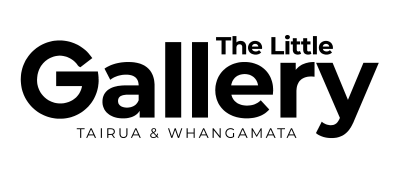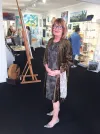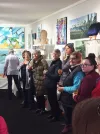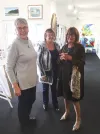Art History With Lynne Robinson | Blogs | The Little Gallery
- 8 August 2018
- Jo Dalgety
Thank you for joining us at The Little Gallery Whangamata for Lynne Robinson’s guided tour: From Raphael to Mondrian: Art History ‘with a twist’! It was lovely to see everyone enthused and eagerly anticipating Lynne’s walk-and-talk journey through the various influential movements in art history. Presenting a fantastic opportunity to learn how some of our artists draw from the legacies of these major art movements, as well as reflect on techniques used in creating contemporary masterpieces, Lynne’s tour offered a unique insight from the perspective of someone who is an artist as well as an art historian.
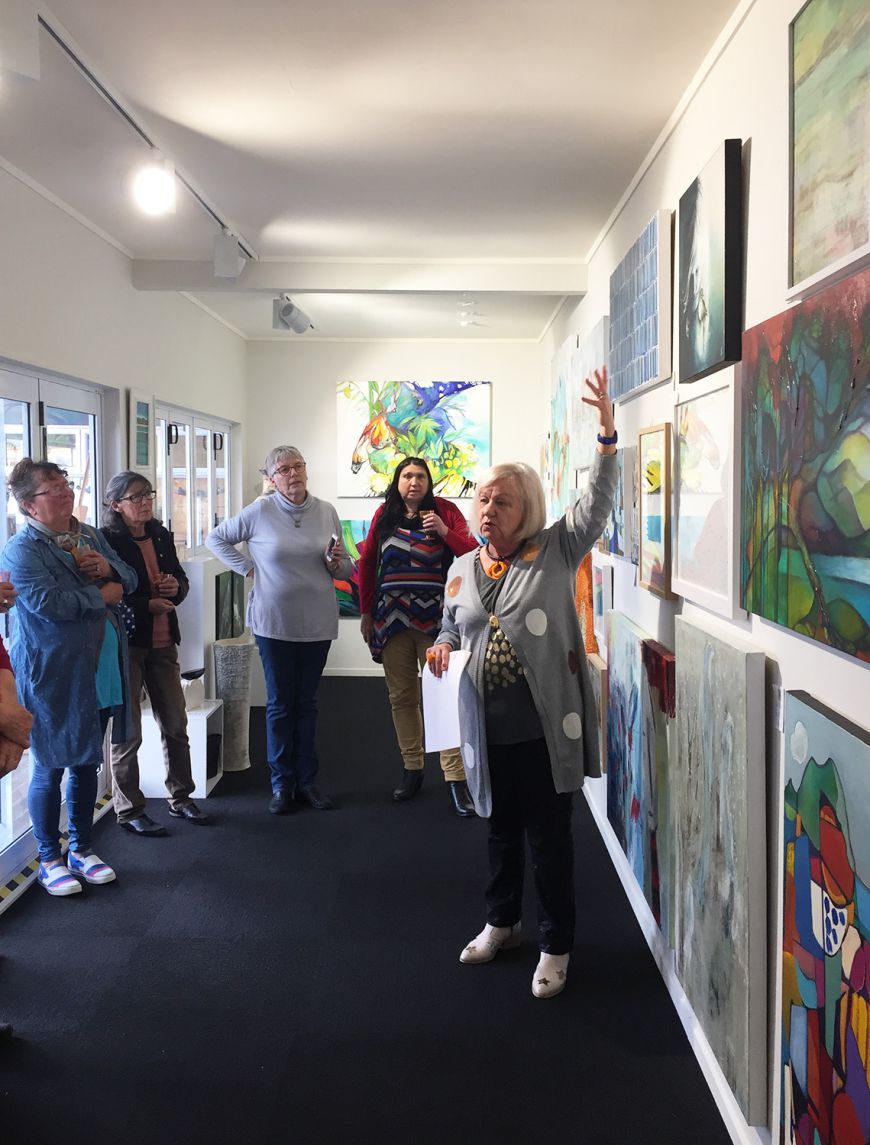
Lynne began by talking about the Renaissance, a movement which spanned between the 14th and 17th centuries in Europe. In this period subjects were typically portrayed in an idealistic way, from rural landscapes to the Madonna, while the use of iconography hinted at multiple layers of meanings. Significant technical features in Renaissance paintings included symmetry and harmony, and the ideal of everything fitting into a perfect triangle. Pictorial space tended to be demarcated into three clear distinctions of foreground, middle-ground and background, and the techniques chiaroscuro (capturing light to dark) and sfumato (blending tones into hazy gradients) enabled the creation of beautiful, atmospheric moments as well as capturing the essence of relationships between subjects in the composition. Lynne pointed out these features reflected in Julie Whyman’s ‘Sharing Secrets’ – a painting capturing the intimate moment of a child’s friendship with the waxeye bird.
We then moved on to Realism, which is recognised as the first modern movement in art history. Artists rejected traditional forms of art and replaced idealistic or Biblical images with real life events and depictions of modernity. One of the examples Lynne shared was Edouard Manet’s ‘Le Déjeuner sur l'herbe’ (Luncheon on the Grass), which was originally rejected by the main art gallery, the Salon. Part of the Realism movement included photorealism, where the artist attempts to reproduce an image as realistically as possible. In the gallery Lynne recognised a couple of artists who specialise in this style, namely Jane Galloway and Grant Simpson.
Impressionism was where Lynne took us next, and there were plenty of examples in the gallery that she could draw from - including Liz Hart’s ‘Tranquil Journey’ or Mardi O’Shea’s ‘Ports of Call’, where the artists create a loose impression of a subject rather than a defined depiction. Pioneered by Claude Monet, the Impressionists led a movement which was concerned more with form and light rather than realism. With a desire to capture the ‘essence’ of the natural world, they learned how to mix colours based on how the eye works, and mixed paints straight onto the canvas using strong colours and bold, short brushstrokes. A fun fact Lynne shared was that Leonardo da Vinci was the first person to notice the similarity between the way a camera obscura worked and the way a human eye functioned, and devised his own way to study the eye. He boiled them in water until the whites hardened like a boiled egg, and sliced them open to dissect them. Lynne imagined that in today’s world he would likely have been a scientist or engineer rather than an artist!
Lynne then moved to Cubism, an early 20th century movement where subjects were broken up, analysed and reassembled in an abstracted form, depicted from many viewpoints simultaneously, rather than from a singular perspective. Developed by Pablo Picasso and Georges Braque, this style gives the impression of multiple viewpoints with distorted forms and ambiguous spatial relationships, exemplified in Stephanie Crisp’s use of collage in her Port Series, and also in Mischelle O’Donnell’s ‘Seaqullable’.
A lesser-known movement Lynne brought up was Japonisme, where European art was influenced by Japanese art. The techniques of Japanese printmaking were one the main sources of inspiration for Vincent Van Gogh, who became an avid collector of Japanese art. Teaching him a new way of looking at the world, their influence can be seen in many of his paintings and drawings. Lynne pointed out Joanne Mahoney’s original print ‘Amaryllis Lily’ and Kay de Blaauw’s ‘Ikebana Series’ as some great examples of this movement.
Expressionism came next: originally in both poetry and painting, this movement presents the world from a subjective view, distorting it radically for emotional effect and to evoke specific moods or ideas. Lynne referenced Norwegian artist Edvard Munch, whose experience of many tragic events as a child are interpreted as manifesting in his paintings as an adult – ‘I do not paint what I see but what I have seen’. From the gallery Lynne drew comparisons to Dhyana Muir’s ‘Walking Away’, and ‘Permission to Climb’ by Sharen Watson.
Lynne then directed the tour towards Abstraction, focusing in particular on the Russian artist and art theorist Kandinsky, who is widely credited with painting one of the first purely abstract works, ‘Untitled’. He referenced well-known forms, conventions of representation and narrative illusion where the painting tells a story. ‘Tidal Catch’ by Kate Madill Jones, ‘Sunlit Trees’ by Wendy Walls and ‘Boa Escalator’ by Kirsty Black were Lynne’s stand out exemplars of this movement. One of the strands of abstraction Lynne discussed further included geometric abstraction, where geometric forms are used in non-objective compositions. A significant artist of this movement was Mondrian, who is regarded as a pioneer of abstract art and one of the greatest artists of the 20th century. His artistic direction changed from figurative painting to an increasingly abstract style, until reaching a point where his painterly vocabulary was reduced to simple geometric elements. In the gallery, many of Michael Smither’s prints capture this style perfectly - an established New Zealand artist, Michael has used colourful geometric shapes to depict a range of subjects from leaves through to boats.
A highly engaging, informative and insightful tour, From Raphael to Mondrian was enjoyed by all. A special thanks to Lynne Robinson for her time and generosity with sharing her knowledge and ideas! We are already lining up another educational talk with Lynne for 2019 – be sure not to miss it!
Enjoyed this article? Sign up to our newsletter below and be the first to hear about our latest Art Chat posts!
